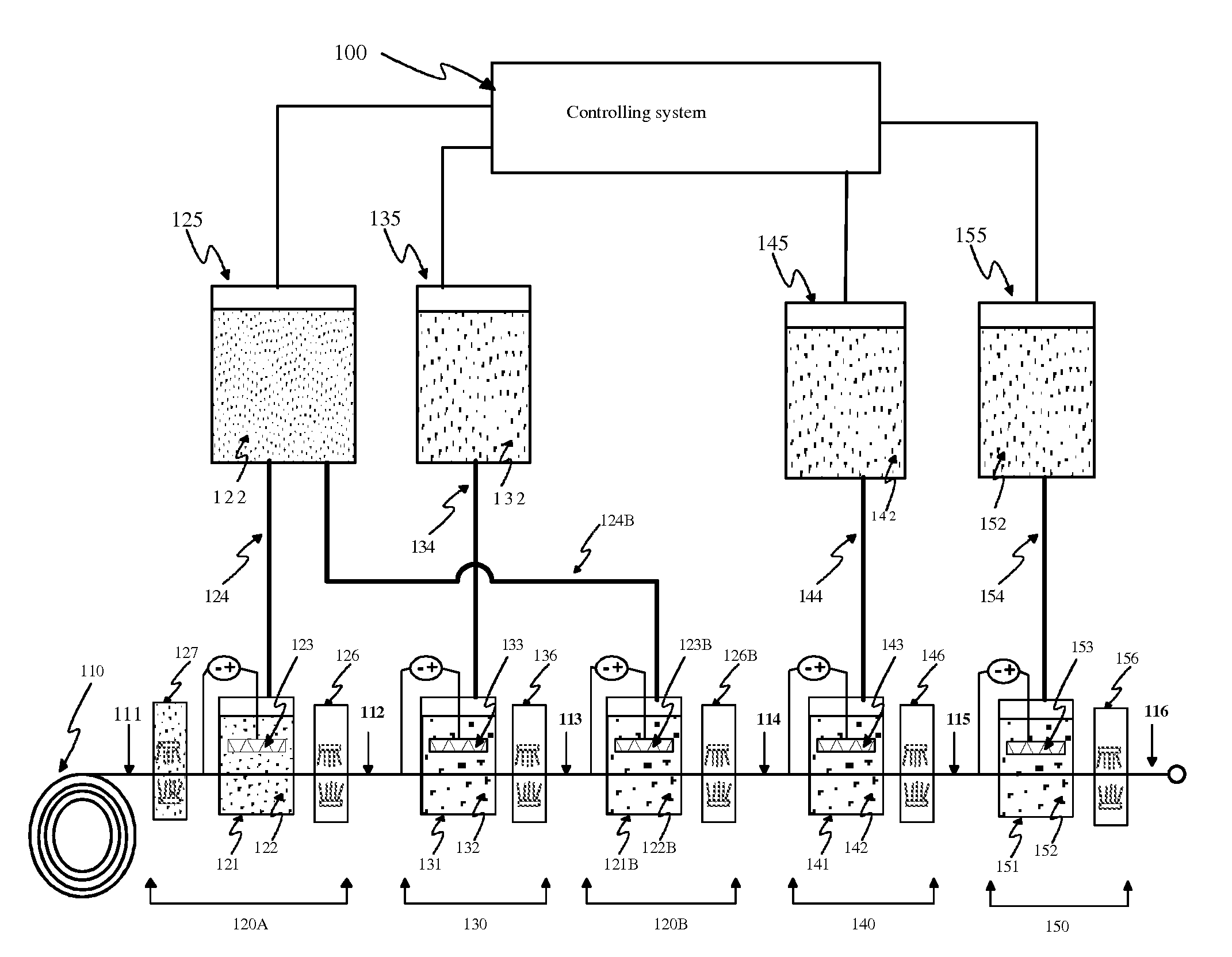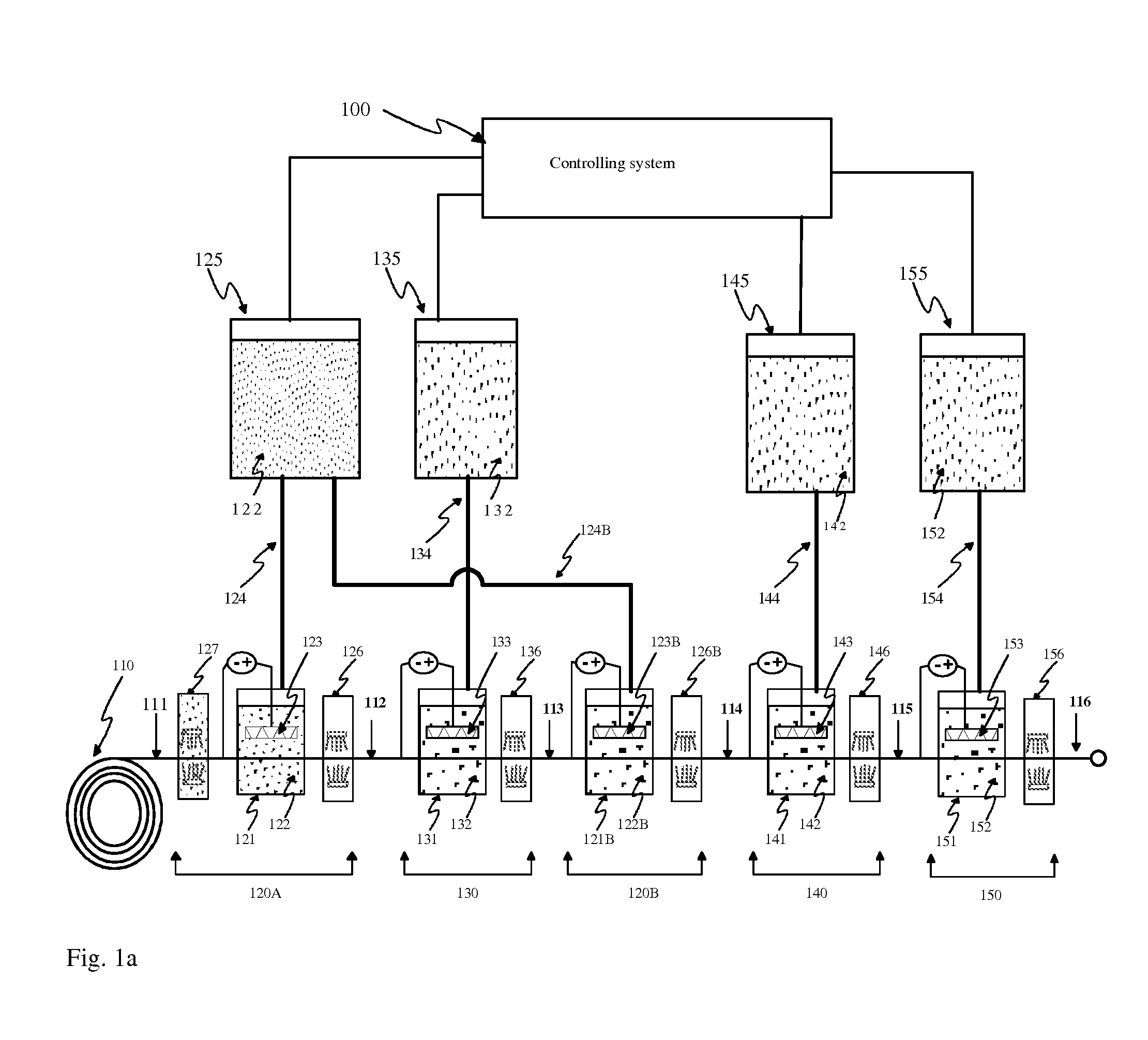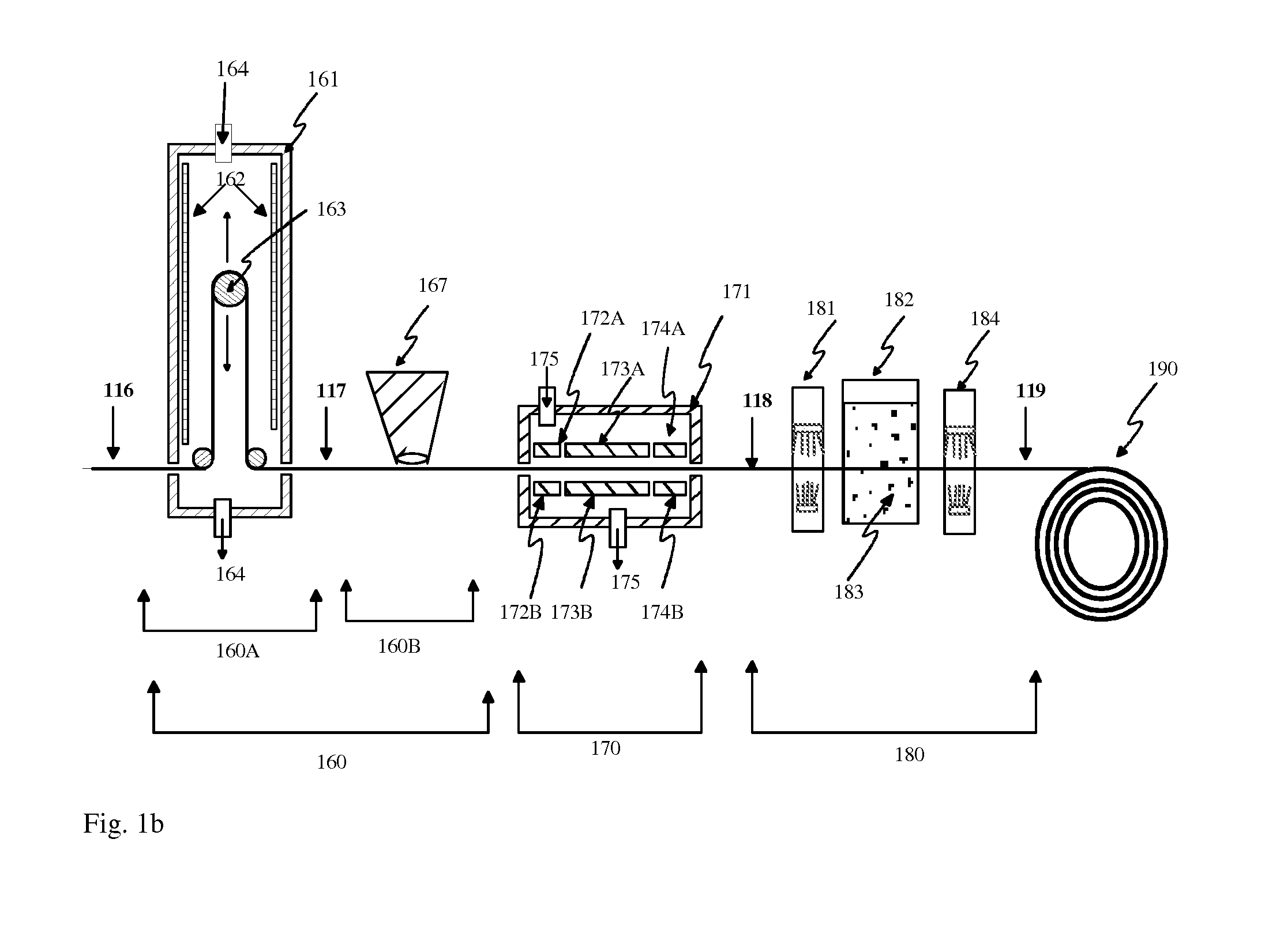Methods for fabricating thin film solar cells
a solar cell and thin film technology, applied in the field of solar cell manufacturing, can solve the problems of high equipment cost and low material utilization, difficult to control the composition or atomic ratio of the four elements, and high cost of silicon solar cells
- Summary
- Abstract
- Description
- Claims
- Application Information
AI Technical Summary
Benefits of technology
Problems solved by technology
Method used
Image
Examples
example 1
[0052]The substrates used for the tests were stainless steel / Mo / Cu / In / Cu, stainless steel / SiO2 / Mo / Cu / In, and glass / Mo / Cu / In. These substrates have Cu and In surface where Ga—Se alloy is being electroplated. The solutions used for the tests were consisted of gallium chloride (GaCl3), 0.01 M selenium dioxide (SeO2), and one of the complexing agents selected from the group comprising of 0.1M Glucoheptonic acid sodium salt (C7H13NaO8), 0.1M polyethylene glycol (C2H4O)nH2O, 0.15M sodium lauryl sulfate (C12H25SO4Na), 0.3M sodium ascorbate (C6H7O6Na), 0.25M sodium salicylic (C7H5NaO3), and 0.2M glycine (C2H5NO2). The gallium chloride concentration was 0.15M, 0.35M, 0.50M, 1.0 M, and 2.0M. The pH was adjusted to 10.5, 12.5, and 13.5 respectively. Current density was varied from 5 mA / cm2 to 50 mA / cm2. Temperature was at 15C, 20C, and 25C. The electroplated Ga—Se alloy thickness was from 300 to 1000 nm. The electroplated Ga—Se surface was dense, bright, and smooth. However, it was found that ...
example 2
[0053]The substrates used for the tests were stainless steel / Mo / Cu / In / Cu and stainless steel / Mo / Cu / In. The solutions used for the tests were consisted of 0.25 M gallium chloride (GaCl3), selenous acid (H2SO3), and 0.1 M Glucoheptonic acid sodium salt (C7H13NaO8). The concentration of selenous acid (H2SO3) was 0.01 M, 0.05M, 0.1M, and 0.25M, respectively. The pH was adjusted to 10.5 and 13.5 respectively. Current density was at 25 mA / cm2. Temperature was at 20C. The electroplated Ga—Se alloy thickness was from 300 to 1000 nm. The electroplated Ga—Se surface was dense, bright, and smooth.
example 3
[0054]The substrates used for the tests were stainless steel / Mo / Cu / In / Cu and stainless steel / Mo / Cu / In. The solutions used for the tests were consisted of 0.25 M gallium chloride (GaCl3), 0.025 M selenous acid (H2SO3), 0.025 M CuCl2, and 0.1 M Glucoheptonic acid sodium salt (C7H13NaO8). The pH was adjusted to 10.5 and 13.5 respectively. Current density was at 25 mA / cm2. Temperature was at 20C. The electroplated Ga—Se—Cu alloy thickness was around 500 nm. The electroplated Ga—Se—Cu surface was dense, bright, and smooth.
PUM
| Property | Measurement | Unit |
|---|---|---|
| molar ratio | aaaaa | aaaaa |
| molar ratio | aaaaa | aaaaa |
| thickness | aaaaa | aaaaa |
Abstract
Description
Claims
Application Information
 Login to View More
Login to View More - R&D
- Intellectual Property
- Life Sciences
- Materials
- Tech Scout
- Unparalleled Data Quality
- Higher Quality Content
- 60% Fewer Hallucinations
Browse by: Latest US Patents, China's latest patents, Technical Efficacy Thesaurus, Application Domain, Technology Topic, Popular Technical Reports.
© 2025 PatSnap. All rights reserved.Legal|Privacy policy|Modern Slavery Act Transparency Statement|Sitemap|About US| Contact US: help@patsnap.com



